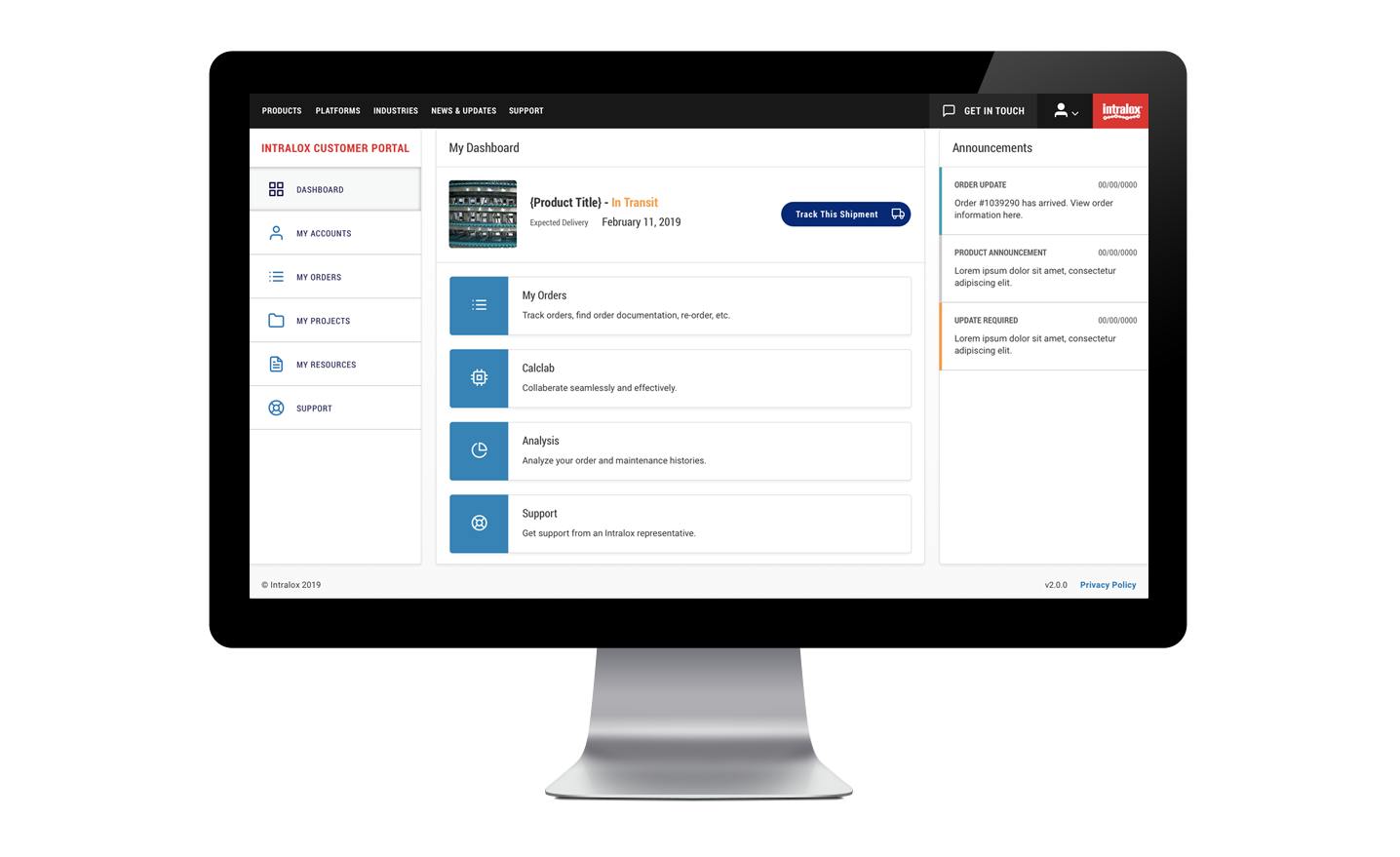
- UI
- Interaction
- Process
- Product
This is a true story of transformation. Not only did my role as a designer change to be more of a Product Owner, but the work I did as a team lead, product designer, and owner revolutionized Intralox's entire Customer Experience strategy.
When I joined Intralox I was tasked with developing a design system that would work for both our internal software development efforts and our public facing marketing materials. To do this, I set up a stakeholder group and while working with them, a common theme emerged.
Intralox customers have come to expect world-class customer service, and part of those expectations is the ability to conduct routine business with Intralox online.
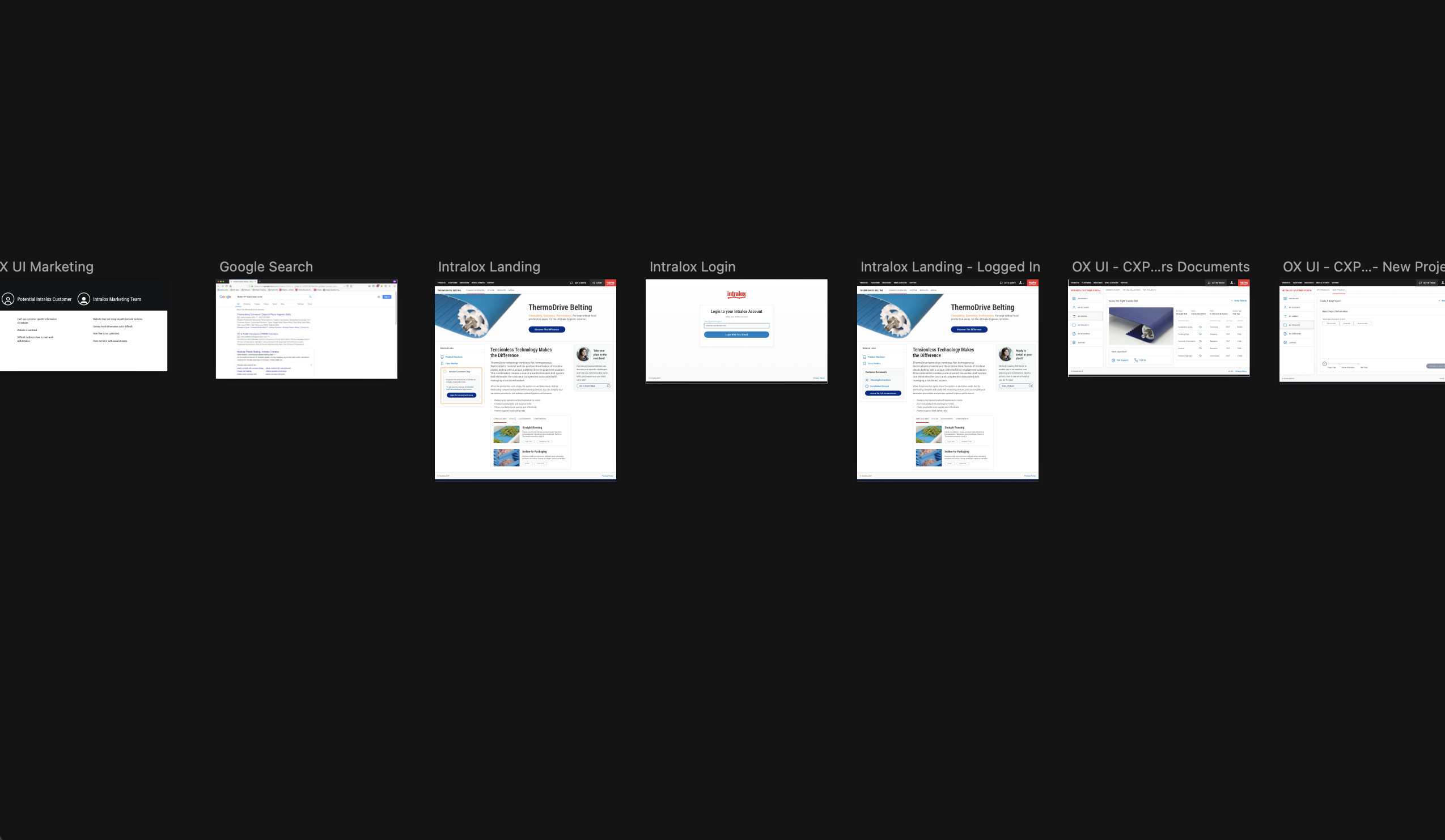
So I put together a sort of "skunks-work" deck that showed how this design system could be applied to a fictitious Customer Portal. This would transform my career by turning me into the new CXP (customer experience portal) Product Owner and Team Lead.
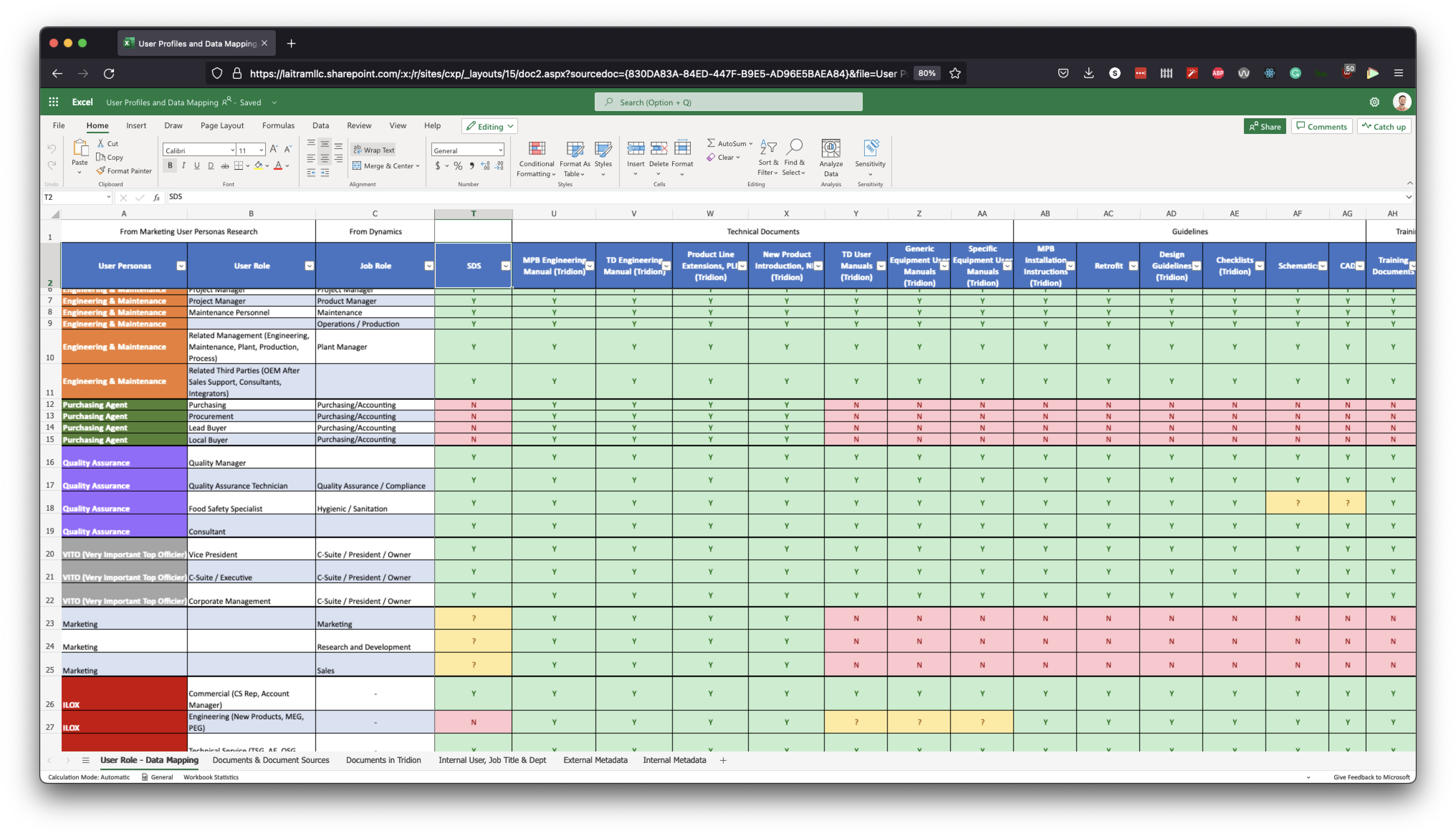
After showing the skunks work project I was approached by company leadership with a question - "can this be done?" This kicked off my transition to Product Owner and I immediately set off to define the core feature set and user personas we needed to develop. This spreadsheet became a living document tracking all of our features by user role (with personas as a subset of a larger role).
The stakeholder group for this work began to transition to include company leadership in addition to marketing and engineering. With this group in place we began to expand project requirements and develop an MVP. The out comes of this would start the digital transformation of Intralox's customer service.
While the ultimate goal would continue to be a customer facing portal, the project would start as an operational excellence play.
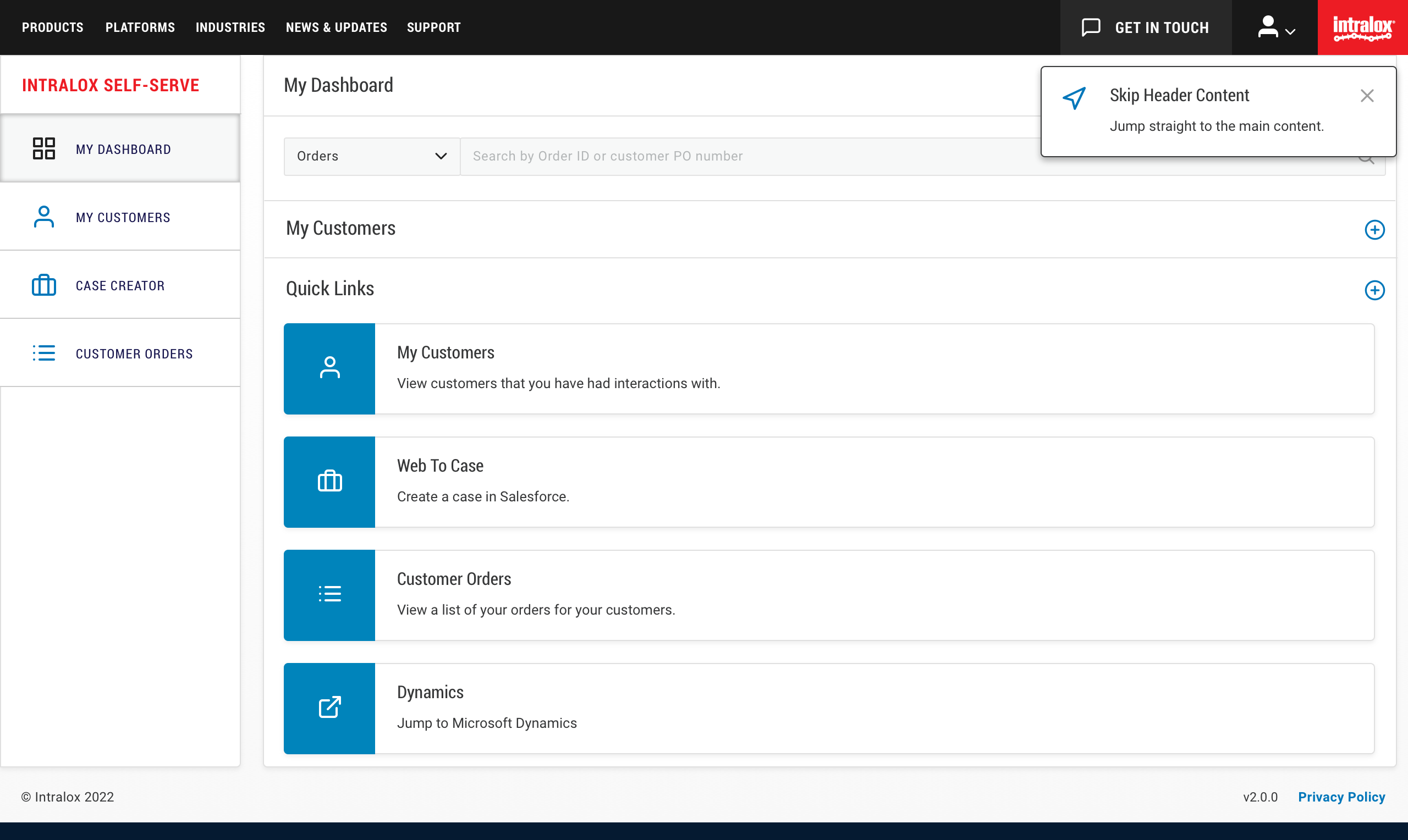
We started designing the product after interviewing many customer service representatives. Through those conversations we learned that the lowest value, but highest volume calls that our reps had to field were calls about order details and shipping information. Thus, the dashboard and product would work to give them immediate access to that data.
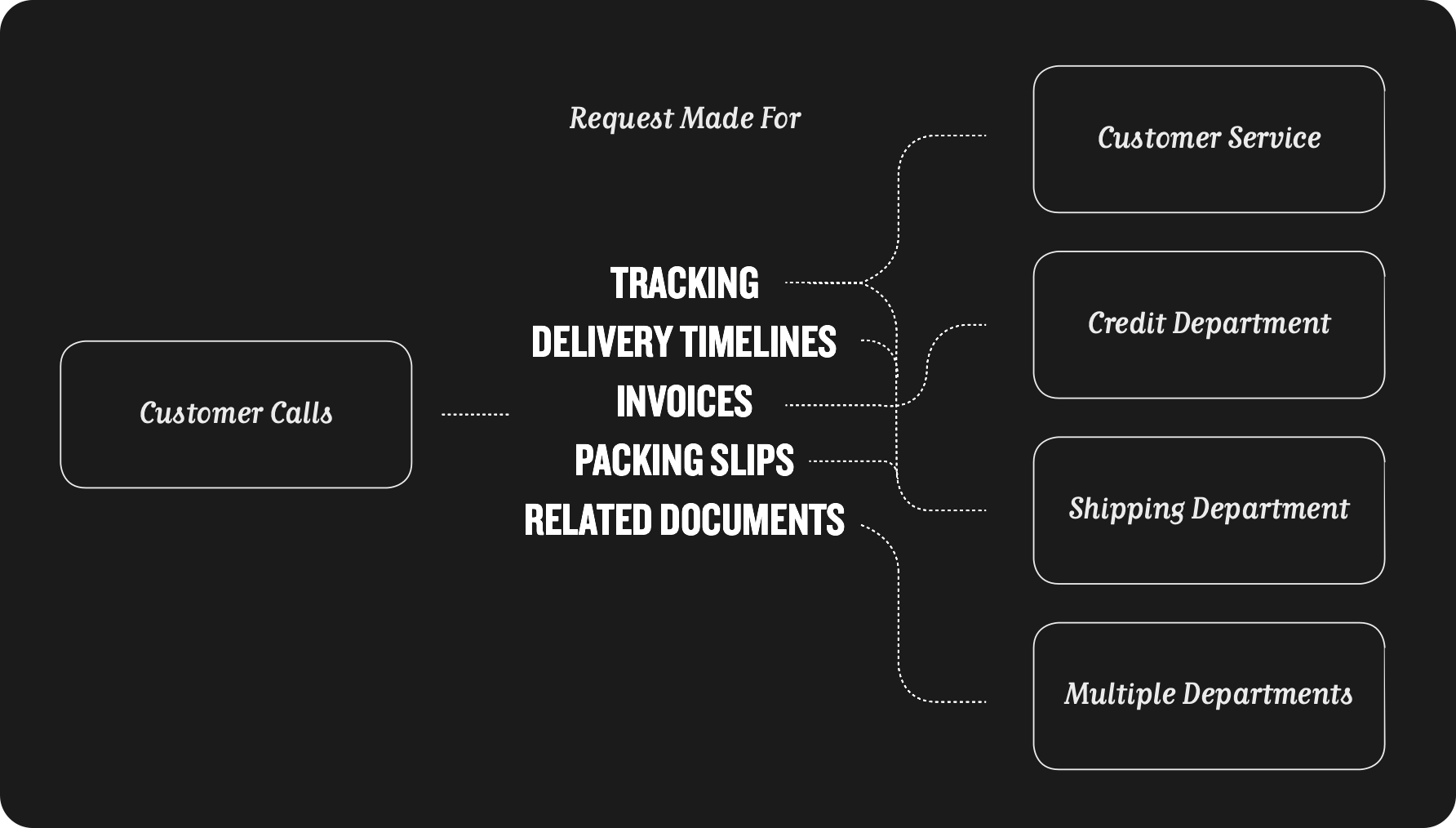
The calls customer service received about order information were not only low value, they were also hard work. What we learned was that for each piece of order information a customer service rep had to go to a different system or call a different department. That looked something like this.
Through these interviews we began to understand our customers actually had a decent experience, even if dated. They made one call and got what they needed, our reps on the other hand, made several.

The initial value proposition was less time for CS Reps fielding routine questions, and more time for them working on relationship building and customer understanding.
But there was another value proposition hiding in plain sight.
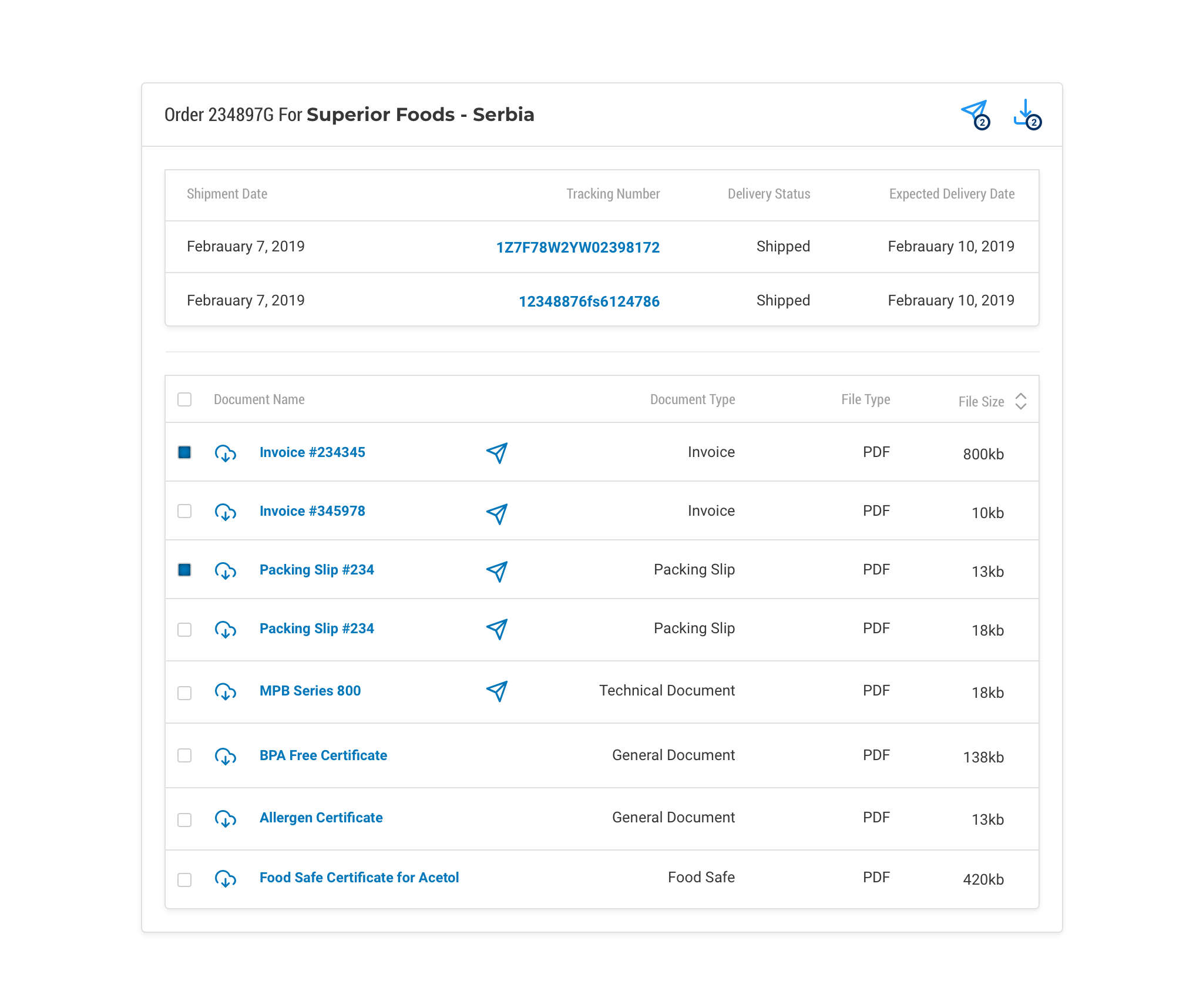
If we could reproduce the Customer's Experience for our Reps, we could both validate that what we were building worked (preventing a potentially error prone release) while also saving the company an immense amount of time.
The simple screen here follows many file sharing design patterns, but behind the scenes, the real work was connected a diaspora of legacy systems to take a single order number (provided by a customer) and render all the documents and tracking numbers associated with that order into one screen.
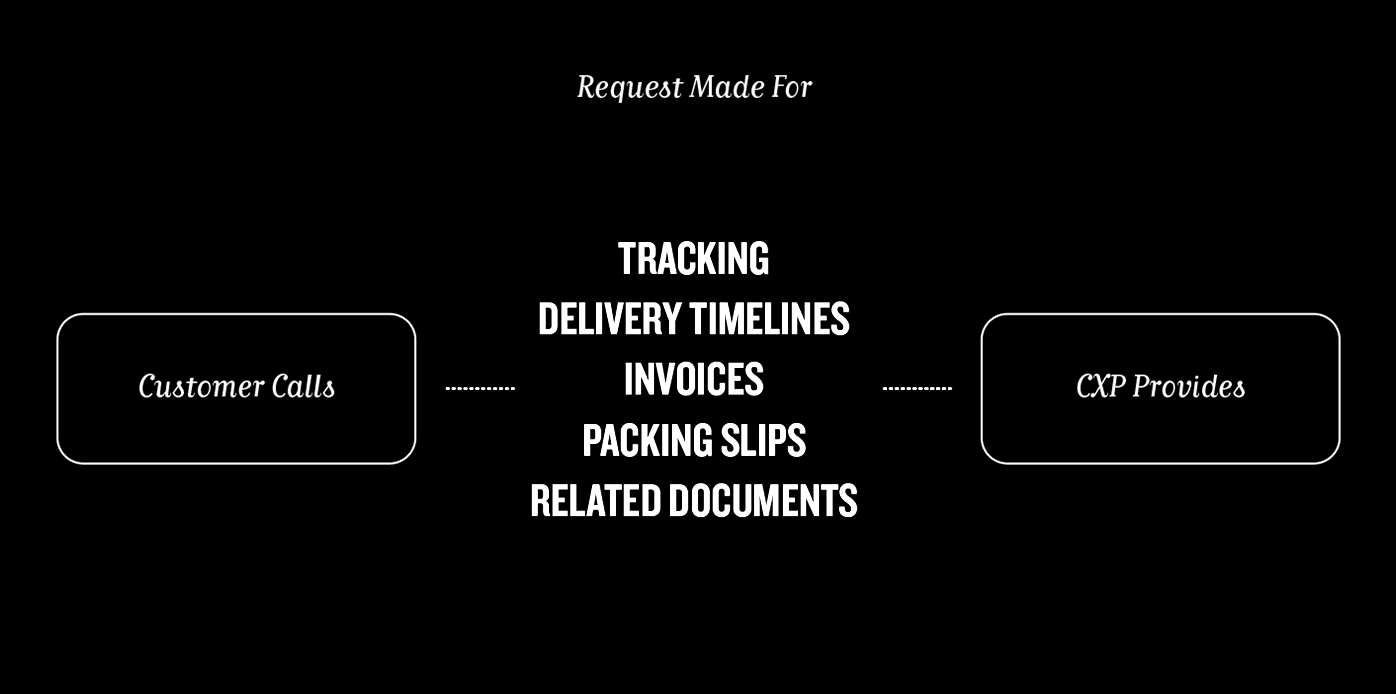
As we saw previously, what made the calls low value for reps is that to simply share a tracking number and packing list with a customer, they had to interact with sometimes 4 or 5 different teams. What wasn't mentioned is that often times, that took days.
Can you imagine, in 2020 waiting days for an invoice to be emailed?
The application became an Operational Excellence play. Almost every transaction completed by a CS Rep represents one less call to another department, representing massive time savings. For our six month beta test, we saved the company almost 2200 man hours by providing direct access to 1,175 orders and generating 8,750 order documents.
Needless to say, this would be the foundation for a direct to consumer release which will be another case study ;).